Borderlands: Fear, uncertainty and life on Ukraine’s front line
Amid fears of a Russian invasion, war-weary residents of eastern Ukraine who have endured more than seven years of a protracted conflict ask what the future holds for the region – and for their lives.
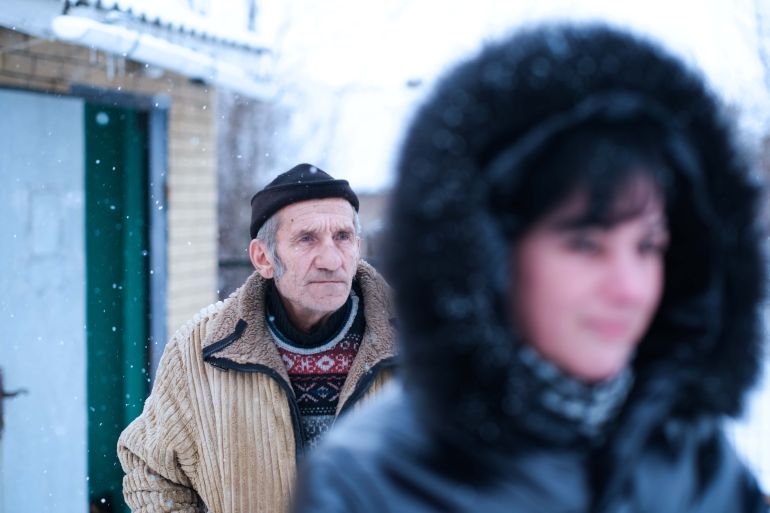
Listen to this story:
Bakhmut, Ukraine – Mikhailo Kulishov, 34, is tired of war.
Keep reading
list of 4 itemsRussian court hands 25 years to arson plotter accused of Ukraine links
Russia-Ukraine war: List of key events, day 816
Russian attacks on Ukraine’s Kharkiv region kill at least 11 people
A gentle family man, with a passion for landscape photography, Kulishov has devoted himself in recent years to tourism, specialising in taking people to explore former industrial sites in eastern Ukraine. He has tried to forget the ongoing conflict which forced him out of his home, a mere 40km away, in January 2015.
At an upscale restaurant in his adopted town of Bakhmut, Kulishov spoke with gusto as he described a local salt mine in the Donetsk region that, among other events, hosts a philharmonic music festival.
He paused and poured himself some uzvar, a traditional beverage made with dried fruit and berries. Even with a separatist conflict on the border, the future of Donetsk region looked bright, he said in a serious tone, but now, as tensions between Ukraine and Russia rise, it seems as though history might repeat itself.
“I have already had the experience of having to leave my home,” he said. If shells started to land near his home again, he would not hesitate to leave.
Kulishov was attached to his hometown of Horlivka, also in the Donetsk region. So even as Russian-backed separatists stormed the city hall on April 30, 2014, he tried to convince himself and his wife that the situation would soon blow over.
At first, his optimism seemed well-placed.
The Ukrainian army recaptured parts of Horlivka in July 2014 and had much of the city surrounded. But the separatists held their positions and kept control of Horlivka, pulling the city into months of bitter fighting.
Each day, the shelling got worse, forcing Kulishov, his wife and their young baby to take shelter in their basement. As an IT specialist, he was able to continue working remotely, but when Ukraine suspended banking services to rebel-held territory later that year, he was unable to withdraw his earnings to purchase nappies and food for his family.
Eventually, they had no choice but to flee. “I felt so much sadness and pity, I didn’t want to leave my city,” he said. “But when you compare these emotions to common sense, you know what you have to choose.”
Kulishov is now just one of roughly 1.5 million people displaced by the ongoing conflict in eastern Ukraine, which has killed more than 14,000 people, and the annexation of Crimea in 2014.
Like many of those displaced in Ukraine, Kulishov never expected the move to Bakhmut to be permanent.
He now works for the local tourist board, guiding adventurous travellers around the region’s geological points of interest, including two enormous heaps of chalk waste called the “pyramids” of Rayhorodok. “I like it here. It’s a new home, and I like what I do a lot,” he said.
But with Russia in recent weeks having amassed more than 100,000 soldiers along its border with Ukraine, fears of an invasion are at an all-time high. Kulishov and his family face the very real prospect of having to move again. “If there is trouble, it will be in this area,” he said. “I have the same feeling as before, this ‘military muscle-game’ being flexed around us.”
Amid the current tensions, war-weary residents living along the borderlands in eastern Ukraine appear bereft of panic. Instead, after more than seven years of a perpetual threat of an invasion, many have – at least on the surface – developed an apparent apathy to the latest round of tensions. But beneath this apathy people’s fear and uncertainty are growing around what will happen to the region – and their lives – in the coming weeks.
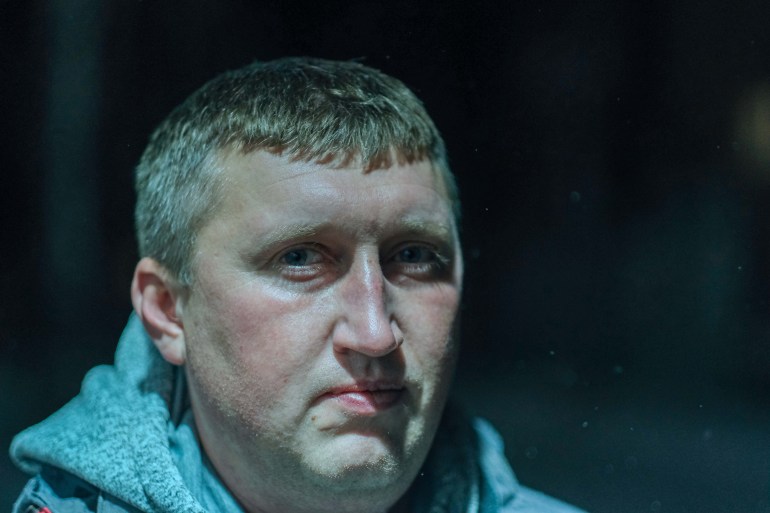
‘What have we lived through?’
The conflict in eastern Ukraine began in February 2014 after anti-government protests led to the removal of Ukraine’s pro-Russian President Viktor Yanukovych. Russia responded by sending in its military and annexing Crimea, the peninsula on the Black Sea in Ukraine’s south. Then in April, Russian-backed separatists seized territory in the Luhansk and Donetsk regions in eastern Ukraine.
Maksym Khodushko, 42, a fast-talking, gregarious marketing manager sat in an opulent yet bland hotel lobby as he recalled the three months in 2014 when his city of Kramatorsk in the Donetsk region was occupied. “There were arrests, shops were robbed, shopping malls were destroyed,” he said, pointing to Kramatorsk’s busy shopping street just outside the window.
With the city of about 150,000 people controlled by Russian-backed separatists, Khodushko decided to channel his frustrations into online activism to protest his city’s occupation, an activity that the separatist authorities did not approve of. “I am really lucky that nothing happened to me,” he said. “I know people who were kept in the city hall and tortured in the basements for their activism.”
Heavy fighting continued around the city. On June 16, mortar shells began to land about 100 metres from his apartment windows. “The house was shaking, so many windows were breaking,” he recalled. “The part of the city we live in was full of white smoke, sirens howling, people leaving the block. A few were murdered and injured on that day.”
Khodushko’s father and brother were forced to build a makeshift bomb shelter with their neighbours where they would all sleep at night.
Eventually, after three months of heavy fighting, the Ukrainian military regained control of Kramatorsk from separatist militias.
It is an experience, he said, that has left an underlying trauma on many residents. “It was only three months under occupation, and then it was life as normal, even better in some ways,” he said. “But sometimes you just stop and think, ‘What have we lived through?’”
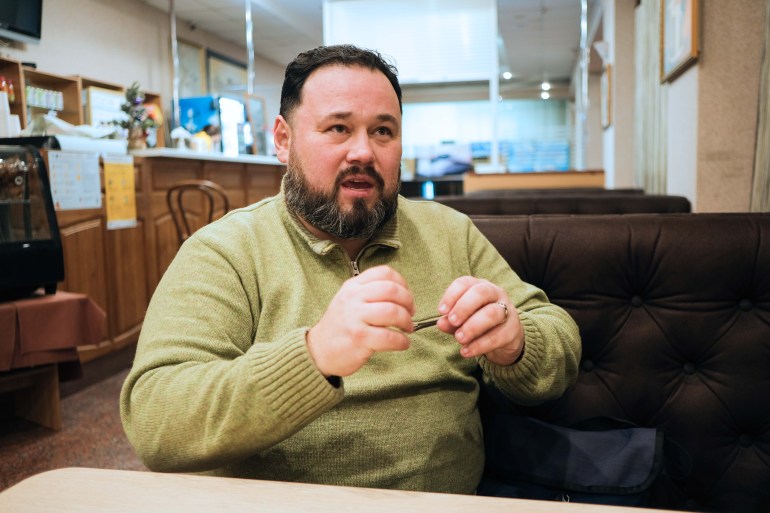
‘Nowhere to run’
Khodushko feels that the months of occupation affected his health. In the years that followed, he began to gain weight and was later diagnosed with a thyroid issue. Noises like fireworks can trigger shock-like symptoms and cause him to start shaking.
Kramatorsk, an industrial and engineering centre, lies roughly 50km from the current front line. However, Khodushko thinks that with the recent escalation of tensions the area could once again be embroiled in conflict.
He believes his city falls in a “grey zone” that Russia would like to use as a buffer between them and NATO member states such as Poland. “Some people think [Russian President Vladmir] Putin wants to build a new Moscow here, but he wants this to be a no-man’s-land,” he said.
If Russia invades, Khodushko said he will fight to protect his Kramatorsk in any way he can, even if it is supplying ammunition or food to the army.
“I would be a fool if I say I wasn’t afraid,” he said. “But I have nowhere to run. My home, my family, my life is here.”
Khodushko feels this time, an invasion would be much more devastating than the previous occupation because Russia could move in with the full force of their army and air force.
“After our experience during occupation,” he said. “I know a lot of people in Kramatorsk would flee if there was a full invasion.”
There is no large-scale Ukrainian military build-up in Kramatorsk, but small changes suggest to Khodushko that the army senses there is an increased threat of an invasion. For example, on a recent walk just outside the city, he noticed seemingly new trenches facing east. With the existing trenches much closer to the front line, about 45km away, this could suggest the Ukrainian army has prepared an extra line of defence if the first is breached.
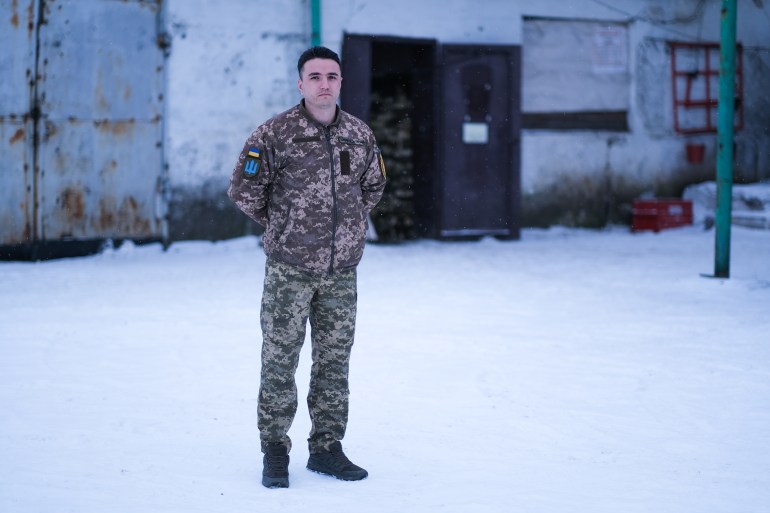
Soldiers on the front line
In the neighbouring Luhansk region, about 80km east of Kramatorsk and within earshot of front-line shelling, lies Popasna, a city occupied by Russian-backed separatists and subsequently reclaimed by Ukrainian government forces in 2014.
At a Ukrainian army base located in the area, Dzhemil Izmailov, the youngest battalion commander in the country’s army at 25 years of age, walked around a frozen courtyard.
He wrestled with Baton, a dog who was blinded in one eye by one of the many mines scattered along the front line, before walking into an old stone farmhouse. Inside, soldiers warmed by an endless array of heaters pored over some maps of the area.
There was a distinct sense of calm around the camp, with no signs of an impending invasion, but for Izmailov, it is a threat he has learnt to live with for more than seven years. Since a tentative ceasefire was signed in 2015, Izmailov said he has faced almost daily violations of this agreement, including periods of intensive shelling – often lasting for weeks – and the constant threat of sniper fire.
On one occasion, Izmailov came close to being shot by a separatist sniper. “The bullet just missed my head,” he said.
Izmailov is confident that the current Ukrainian defences positioned along the front line in the Luhansk and Donetsk regions could repel an invasion and speaks, like Khodushko, of secondary lines of defence should the Russian army breach the front line.
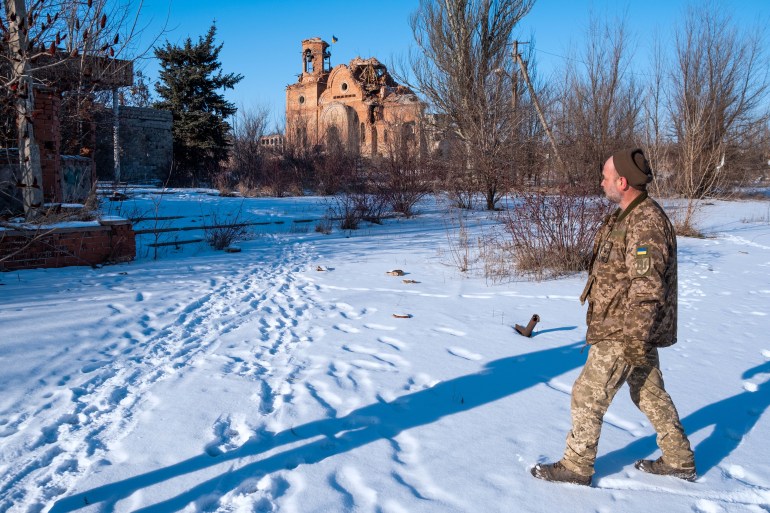
In the network of trenches that runs for hundreds of kilometres and carves out an arc-like shape across the southeast of the country, many Ukrainian soldiers remain unperturbed by the recent global attention that this long-simmering conflict has been given in recent weeks.
These soldiers have been forced to endure the same muddy makeshift trenches and daily routine for years.
Around the now destroyed village of Pisky, southwest of Popasna in the Donetsk region, Nastya*, a 23-year-old soldier, prepared a homemade meat soup for her unit.
There was a peculiar homeliness to the makeshift kitchen nestled in the ruins of an old building. Drawings by the soldiers’ children and grandchildren lined the wall. Outside sat a lopsided Christmas tree with a dusty Santa hat placed atop.
Nastya described how she had always wanted to be a soldier, but that this dream was shaken by the harsh reality of life in the trenches.
Snipers regularly target her unit, which is located on elevated ground, and the sweltering summers followed by freezing winters can make sleeping in the trenches a miserable ordeal.
Nastya remembers just wanting to leave in the first few weeks. “The first time I heard artillery fire I was scared and I questioned if coming here was the right decision,” she said.
Over time, as she grew close to her fellow soldiers who she now describes as a family, she began to thrive in her new environment, embracing additional responsibilities like cooking.
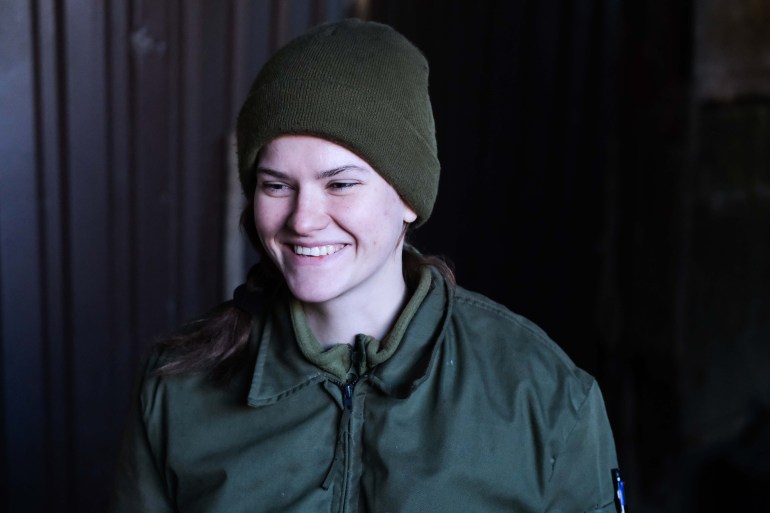
On the Sea of Azov
Nastya comes from the area surrounding Mariupol, a major city located by the Sea of Azov in the southeast of the Donetsk region. It is a vibrant city, with almost half a million residents and a unique architecture influenced by the waves of Greek immigration. It is flanked by sprawling steelworks, which emit a constant stream of toxic chemicals, and a major port.
A few days after meeting Nastya on the front line, I met her mother, Elena*, in one of the half-empty seaside resorts that line the city’s beachfront during off-season to hear her perspective on her daughter’s choice to fight on the front line.
“Of course, I am proud that she is such a tough person,” she said. “But as a mother, I am nervous about the conditions there, about Nastya’s health.”
The picturesque setting was occasionally interrupted by the sound of a container freight train clattering past. Elena was eager to hear about what it is like where her daughter is and brought an old photo album filled with old pictures of Nastya.
Elena pointed to a picture of a six-year-old Nastya wearing a cadet uniform, visibly emotional.
“She says that the other soldiers are good people, they are like a family, but you know she is my daughter and I still worry, especially with so many men around.”
Mariupol was briefly occupied in 2014 by pro-separatist forces before Ukrainian forces reclaimed the city after weeks of heavy fighting.
Today, it is located just 20km east from the front line behind a series of heavy fortifications and a network of checkpoints that dot the landscape, and is often cited as a likely target for a Russian invasion given that it is positioned between separatist-held territory and the Crimean Peninsula.
“In 2014, people were shocked by all the explosions. The house was trembling,” Elena said.
However, she feels safe in Mariupol after Nastya promised her that the Ukrainian army would be able to withstand an attack of the city. “I will protect all of you,” she told her.
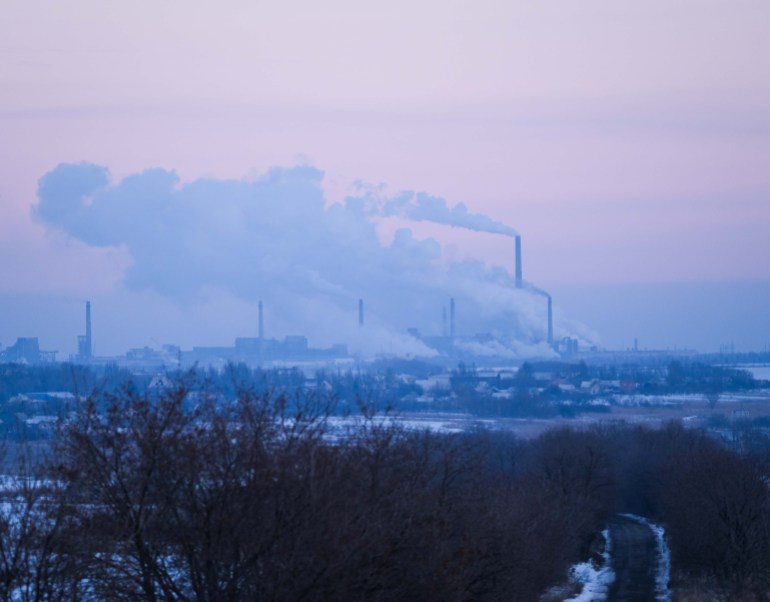
‘Masks off’
This sense of security is not shared by all of Mariupol’s almost half a million residents.
Olena Zolotariova, 44, an environmental activist and member of the city council is worried by the more direct approach taken by Russia during this latest round of tensions. “Before Russia was playing a hybrid war, but now, it seems like they want to take their masks off and play openly, and that makes it really scary,” she said.
Zolotariova fears that if there is an invasion, the city’s metalworks, a cornerstone of the Ukrainian economy, employing roughly every one in four of Mariupol’s residents, will suffer a similar fate to the 88 coal mines in separatist-held territory that after years of fighting have been left to waste away. These mines then, in turn, contaminate the groundwater, sending toxic chemicals into the surrounding soil. A report by Ukraine’s National Institute for Strategic Studies described this contamination as a threat to at least 300,000 people in Russian-backed separatist territory.
“Also, сhemicals from shell explosions pollute the soil and no monitoring, control and mitigation work is carried out,” she said.
She believes the industry around Mariupol could suffer a similar fate. “If Russia takes the plants, they won’t need them. It will become a dead area.”
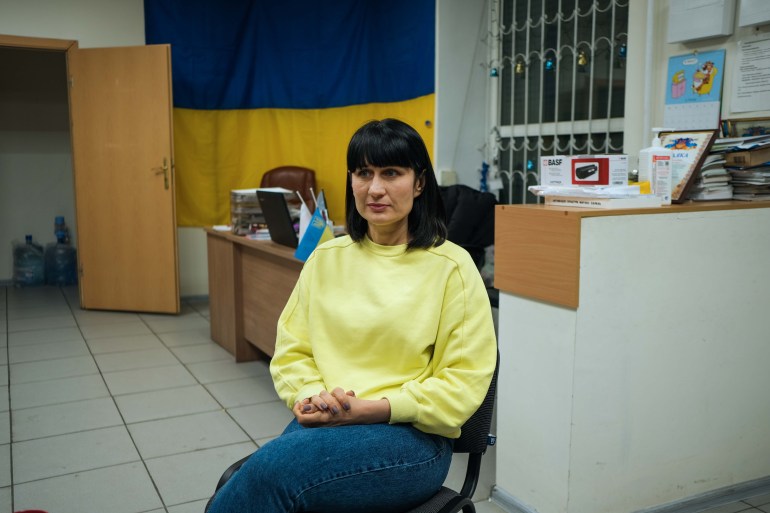
Valeriy Averyanov, 44, is a local businessman who also operates a civilian organisation supporting the city’s forces – a reserve component of the Ukrainian armed forces which includes citizen volunteers in the event of an invasion.
He believes that Mariupol is safe for now based on the new artillery brigades, navy divisions, rocket artillery and increased military personnel now stationed in and around the city.
But he remains convinced that Mariupol is still part of Russia’s long-term plans. “To occupy Luhansk and Donetsk including Mariupol would help Russia create a functional state,” he said. “It would give them access to mineral resources and the Sea of Azov.”
Averyanov is also concerned that if the Russian-backed separatists were even to progress a few kilometres into government-held territory, the precarious industrial makeup of the region could be at risk.
He uses the example of Avdiivka plant which produces coke, a fuel and melting agent used in melting iron ore, which is located just a few kilometres behind the trenches where Nastya is stationed.
If it was captured, he believes it would be an environmental and economic catastrophe for the region. “You can’t just shut down a factory,” he said. “You have to do it in stages.”
Closing it down properly is something he does not believe the separatists would do. A capture of this plant would also choke vital supplies of coke needed for the two metalworks located in Mariupol to function.
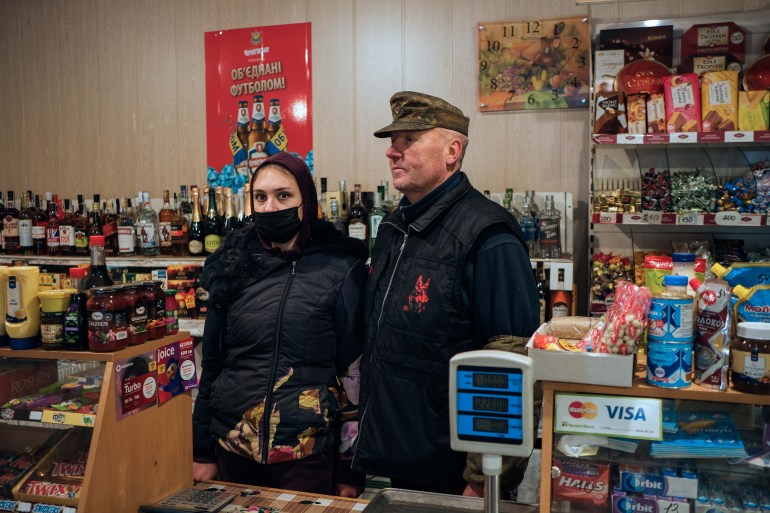
Simmering tension, divided allegiances
In many of the villages and towns located along the front line there is a simmering tension – exacerbated by worsening living conditions – between those who want to remain part of Ukraine and those who would welcome a Russian occupation.
When the conflict began in 2014, many young people and educated professionals left the areas around the front line for the major cities in the west of the country. Transport and trade were also severely disrupted, causing widespread economic hardship.
Victor*, a middle-aged shopkeeper, owns a convenience store in a heavily pro-Russian area a few kilometres east of Mariupol.
He is a fiercely patriotic Ukrainian, wearing military-style clothing and handing out pro-Ukrainian pamphlets to anyone who will accept them. “I would say 90 percent of the people who come to my shop are pro-Russian,” he said with a shrug of the shoulders. “But I am not afraid. Everyone knows where they stand [politically].”
But Victor admits that the situation used to be much more tense. “People used to be out in the street supporting their side,” he said. Now, people are just exhausted by the conflict.
It is a sentiment shared by many who live close to the front line.
Nadiya*, in her early sixties, lives alone, her house only a few hundred metres from the front line in the Donetsk region. “It is scary living here. I feel threatened,” she said. “You keep hearing there will be wars, so somehow you just try not to pay attention.”
Her two children left for the west of the country when the fighting began in 2014, but Nadiya has made no such preparations. “I don’t even let myself think about next steps,” she said. “I just tell myself an invasion will never happen.”
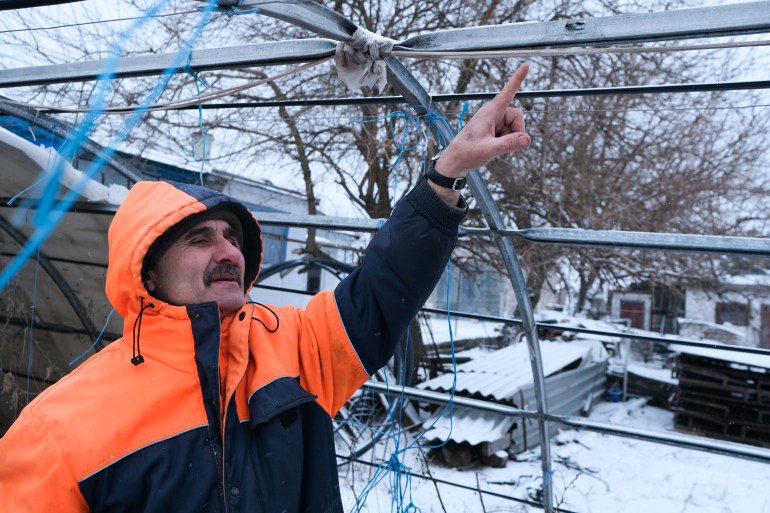
‘Information noise’
The regions of Luhansk and Donetsk are heavily influenced by Russian propaganda, according to Yevhen Fedchenko, co-founder of StopFake, a fact-checking organisation. He said that it is often easier to secure signals for Russian television and radio stations which allows Russia to spread narratives designed to create division. These often include framing Ukraine as hostile and perpetrating crimes against people in the area. According to Fedchenko, this has had a significant effect on many people living near the front line. “They feel that Ukraine has really abandoned them,” he said.
Across the road, Sergey*, a pensioner in his sixties, lifted a cloth from a metal trellis revealing bullet holes accumulated over the years living a few hundred metres from separatist-held territory. He and his wife would welcome a separatist occupation. They believe essentials would be cheaper and therefore their living standards might improve. The years of conflict and the resulting poverty have left them longing for a better life.
“They [the separatists] shoot here sometimes, but we trust them more, they are wiser,” he said, before flashing a coy look and changing the subject.
In Popasna, a city with divided political allegiances, locals often dismiss the growing tensions as political hype, regardless of their own views.
Svetlana*, a local resident, dismisses the recent media interest as “information noise”. “We have had military here since 2014, and now the city is mostly calm and living quietly,” she said.
But many admit that the fear has not entirely dissipated; instead, they have developed various coping mechanisms such as blocking out all the news related to the conflict. Many people have plans for what to do and where to go in the event of an invasion. Others, like Svetlana, would most likely stay. “We talk to people on the other side [in separatist-held territory], and they have everything, things are good for them,” she said.
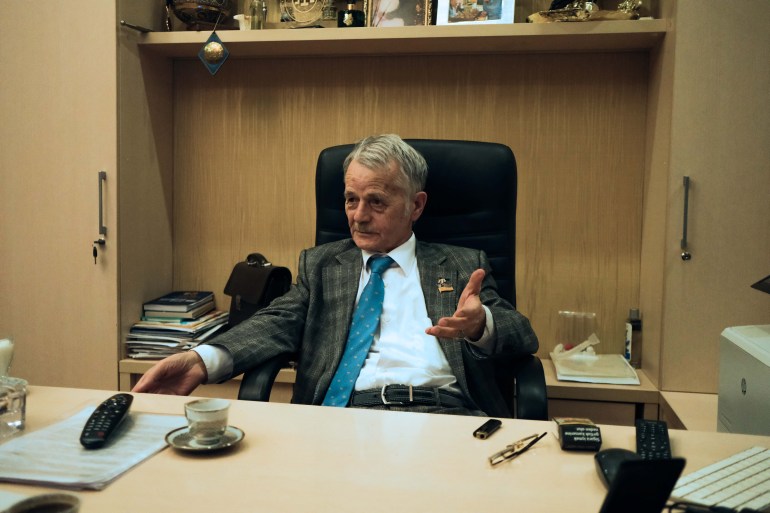
Crimean Tatars
More than 300km west of Mariupol, along the idyllic coastline of the Sea of Azov, lies the Crimean Peninsula, the ancestral homeland of the Crimean Tatars, a Turkic group of Sunni Muslims.
In March 2014, Russia occupied the territory which had been part of Ukraine since the country’s independence from the Soviet Union in 1991. It then officially annexed the peninsula after Crimeans – of which about 60 percent were ethnic Russians – voted to join the Russian Federation in a disputed and internationally rejected referendum.
Mustafa Dzhemilev sat at his office desk in Kyiv, the capital of Ukraine.
He is one of the thousands of Crimean Tatars spread across the country after they were exiled or unable to return to the peninsula after the annexation.
He puffed on a cigarette, before taking a sip of coffee. Dzhemilev is 78, but he is still working a busy schedule as a member of the Ukrainian parliament.
In 1944, when Dzhemilev was only six months old, he was forcibly deported along with 180,000 other Crimean Tatars from their homeland in Crimea to Uzbekistan on the orders of Joseph Stalin.
They were labelled by the Soviet Union – along with other ethnic minorities – as Nazi collaborators, despite tens of thousands of Crimean Tatars having served in the Red Army.
Forced onto sealed cattle trains, many Crimean Tatars died on the journey to Uzbekistan or succumbed to disease or starvation on arrival. Only about half the 180,000 survived the first two years.
“The Soviet idea was not only to resettle Crimean Tatars,” said Dzhemilev. “But also to completely erase the memory of that people.”
As a student activist, Dzhemilev began to write letters to the Soviet authorities asking them to return his people to their homeland. Letters soon turned into articles, and eventually, he became labelled a Soviet dissident. It was a label that would lead to seven criminal sentences and 15 years in forced labour camps.
It would take more than 45 years for the Soviet Union to fall and for Dzhemilev and the Crimean Tatars to return to their homeland.
But it was a bittersweet moment for many, including Elvina Seitbullaeva, 38. She had always been told that Crimea, the motherland, “was like a fairytale”, only to realise that the Crimean Tatars faced discrimination which Dzhemilev describes as a “second front line”.
Tatars were often blocked from buying property and unable to register at a specific address, making it difficult to find work.
But over the years, life gradually improved for the Crimean Tatars. A representative body called the Mejlis was formed in 1991, and 15 Tatar language schools opened.
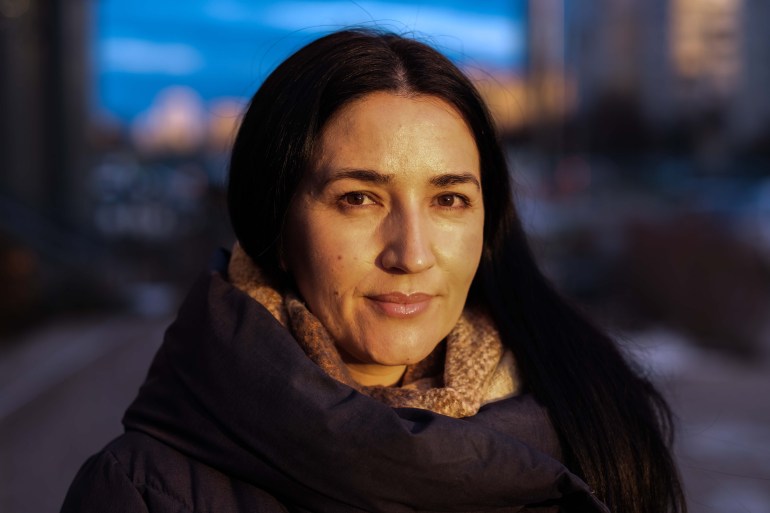
‘We do not have a future’
Then, in 2014, Russia annexed Crimea and held a referendum on merging Crimea with Russia. Dzhemilev, who was chairman of the Mejlis, spoke to Putin a few days before the referendum. “He was trying to convince me that the Crimean Tatars should support the referendum. He was promising us a paradise,” he recalled. “I said the Mejlis had already taken the position that this annexation was illegal, and they would not participate in it.”
After the referendum, which was boycotted by the majority of the 300,000 Crimean Tatars, Russian authorities banned the Mejlis, closed a Tatar television channel and began detaining activists.
Later in 2014, when Dzhemilev returned from Kyiv, he was stopped at the border with Crimea and told he was banned from Russian territory, which now included Crimea.
Seitbullaeva, a journalist who covered the front line during the conflict in 2014 and 2015, is unable to return to Crimea. Her sister, simply for being Seitbullaeva’s family member, was taken in and questioned.
Since the annexation, roughly 10 percent of Tatars have left Crimea, as well as many others who opposed the referendum. Dzhemilev feels the current tensions threaten the future of the Crimean Tatar identity. “As it stands today, we do not have a future as an ethnicity, we will be completely assimilated, or completely destroyed,” he said.
Back at the base near Popasna, the battalion commander Izmailov, who is Crimean Tatar, believes that young Crimeans need to show more affirmative action in the face of repression.
“Countries usually do not care about minorities. If you look at the US, for example, they do not care about the Indigenous people and that is the US,” he said. “So what have Crimeans to expect?”
For now, Izmailov is confident that Ukraine can repel a Russian invasion, but he calls on those living around the country’s borderlands to stay united.
“I think the only way the enemy can win is to exhaust morale,” he said.
Russia, he believes, is trying to destabilise the country from within by amassing soldiers all along the border. “We cannot allow ourselves to become disoriented,” he said, firmly.
*At the request of the interviewee, only their first name has been used